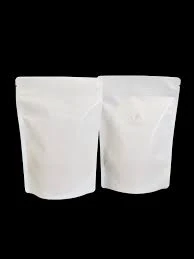- Afrikaans
- Albanian
- Amharic
- Arabic
- Armenian
- Azerbaijani
- Basque
- Belarusian
- Bengali
- Bosnian
- Bulgarian
- Catalan
- Cebuano
- chinese_simplified
- chinese_traditional
- Corsican
- Croatian
- Czech
- Danish
- Dutch
- English
- Esperanto
- Estonian
- Finnish
- French
- Frisian
- Galician
- Georgian
- German
- Greek
- Gujarati
- haitian_creole
- hausa
- hawaiian
- Hebrew
- Hindi
- Miao
- Hungarian
- Icelandic
- igbo
- Indonesian
- irish
- Italian
- Japanese
- Javanese
- Kannada
- kazakh
- Khmer
- Rwandese
- Korean
- Kurdish
- Kyrgyz
- Lao
- Latin
- Latvian
- Lithuanian
- Luxembourgish
- Macedonian
- Malgashi
- Malay
- Malayalam
- Maltese
- Maori
- Marathi
- Mongolian
- Myanmar
- Nepali
- Norwegian
- Norwegian
- Occitan
- Pashto
- Persian
- Polish
- Portuguese
- Punjabi
- Romanian
- Russian
- Samoan
- scottish-gaelic
- Serbian
- Sesotho
- Shona
- Sindhi
- Sinhala
- Slovak
- Slovenian
- Somali
- Spanish
- Sundanese
- Swahili
- Swedish
- Tagalog
- Tajik
- Tamil
- Tatar
- Telugu
- Thai
- Turkish
- Turkmen
- Ukrainian
- Urdu
- Uighur
- Uzbek
- Vietnamese
- Welsh
- Bantu
- Yiddish
- Yoruba
- Zulu
flexible pack
The Future of Flexible Packaging Innovations and Sustainability
Flexible packaging has revolutionized the way consumers interact with products, offering convenience, protection, and extended shelf life. As an ever-evolving segment of the packaging industry, flexible packaging refers to packages that can change shape, typically made from materials such as plastic, film, foil, or paper. It encompasses a variety of formats, including pouches, bags, and wraps that are integral to both food and non-food sectors.
One of the key advantages of flexible packaging is its ability to reduce material usage while maximizing functionality. Unlike rigid packaging, which often requires more resources for production and shipping, flexible packaging can significantly lower the environmental footprint. This attribute is increasingly important as consumers demand sustainability in the products they purchase. Innovative designs optimize space during transport and storage, reducing the overall carbon footprint associated with logistics.
The recent advancements in technology have led to improvements in barrier properties, making flexible packaging a preferred choice for maintaining product freshness
. Innovations such as vacuum sealing and the incorporation of advanced materials enhance durability and protect against contamination. For example, in the food sector, flexible packaging can prevent oxidation and moisture loss, ensuring that products remain fresh for longer periods. This not only benefits consumers but also helps reduce food waste, addressing a significant global issue.flexible pack

Moreover, the flexible packaging industry is leaning towards sustainable solutions. Biodegradable and compostable materials are gaining traction, fostering a positive movement towards reducing plastic waste. Many manufacturers are investing in plant-based materials, which not only offer similar performance characteristics to traditional plastics but also align with the growing eco-conscious consumer base. Furthermore, recycling programs tailored for flexible packaging are evolving, with initiatives aimed at improving the recyclability of multi-material structures.
In addition to sustainability, customization is a notable trend within flexible packaging. Brands are increasingly recognizing the importance of appealing designs to attract consumers. Digital printing technology enables high-quality graphics on flexible materials, allowing brands to create eye-catching packages that resonate with their target audience. Personalization in packaging is another area on the rise; brands can tailor their products to reflect individual consumer preferences, further strengthening customer relationships and loyalty.
E-commerce has also driven the adoption of flexible packaging. The rise of online shopping presents unique challenges, including the need for packaging that withstands the rigors of shipping while protecting the product inside. Flexible packaging's inherent lightweight nature and ability to conform to the shape of its contents make it an ideal solution for online retailers. Pouches and bags take up less space and reduce shipping costs, appealing to businesses looking to maximize profits while minimizing waste.
In conclusion, the future of flexible packaging looks promising as it continues to evolve through innovations in materials, technology, and design. As brands strive to meet consumer demands for sustainability and personalization while addressing logistical challenges, flexible packaging stands out as a versatile and environmentally conscious solution. With ongoing advancements and a growing focus on reducing environmental impacts, the flexible packaging industry is poised for significant growth, transforming the way products are packaged and experienced in the marketplace. The potential for this sector is immense, making it an exciting area to watch as we move forward into a more sustainable future.













